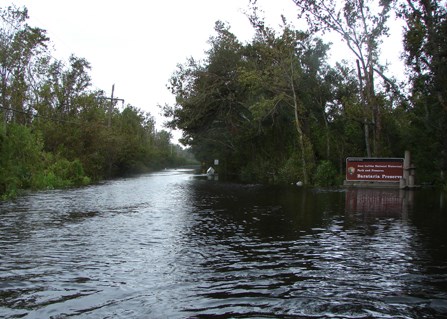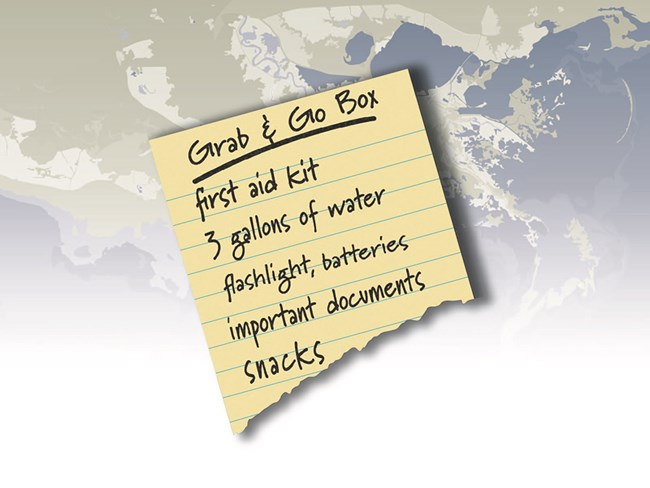How do you pack a coast?Sinking land, rising water, and a changing climate add up to a serious threat for south Louisiana. Follow the link for a 3 1/2-minute Drawing Connections video on how to fit the Louisiana coast into a hurricane evacuation grab-and-go box. The video was created in partnership with the National Park Service Climate Change Response program; learn more about the effects of climate change in national parks at the link. 
Why is the weather all about climate change these days? What is climate change? Is it the same thing as global warming? If the planet's getting warmer, why was there record cold in some places last winter? How does this all affect me? Can I do anything about it? Climate change is not a new phenomenon. The Earth's climate has been changing for millions of years. The geologic record demonstrates that some places that are very cold now once were warm: fossils of three-ton plant-eating dinosaurs have been found in Alaska. Climate change has been an ongoing process over the millions of years of Earth's existence---but the climate change we are experiencing now is happening much faster and is due to human actions. As the world's economy has shifted from agriculture to manufacturing, new energy sources from coal, oil, and natural gas have been developed and used. Burning all that energy has made the earth warmer and has also encouraged a rapid increase in "greenhouse gases," gases that naturally occur but that are also human-made. These gases are in the Earth's atmosphere and act as a greenhouse, holding in the heat produced by human activity, natural processes, and the sun's rays. Because so much of climate change is related to heat, lots of people simply call it "global warming"---which confuses us all when we shiver through a very cold winter! The effects of climate change are becoming more obvious. Average temperatures are rising around the world. Polar ice and glaciers are melting. Extreme weather is more frequent: the past few years have brought monster hurricanes, record droughts, superstorms, more wildfires, and coastal flooding around the world. National parks are feeling the effects too: the area that is now Glacier National Park had 150 glaciers in 1850, but now there are only 25. Climate change is also affecting Louisiana's wetlands and Jean Lafitte National Historical Park and Preserve. Melting polar ice means rising seas around the world, including along Louisiana's Gulf Coast. Bigger storms flood more coastline and erode more land. About a football field's worth of Louisiana coastline washes away or sinks every 30 minutes. Local residents who grew up navigating the coastline by landmarks have seen those landmarks disappear into the water. To make it worse, the levees and other flood controls along the Mississippi River and other waterways mean that no new land is being built and that subsidence---the natural compression and sinking of land---goes on with no hope of new soil washed downstream by seasonal floods. It's a deadly combination: recent geological studies have shown that though land in the Mississippi River delta is sinking fast, relative sea levels are rising even faster. Predicted changes in climate in the Gulf Coast region include hotter air and water surface temperatures, changes in wildfire and rainfall patterns, increased frequency of extreme weather, rising sea levels, and more intense hurricanes. This all adds up to potential destruction of coastal wetlands and the plants and animals that live there---and major changes ahead for all of us, since we depend on that land and its plants and animals. It's not a pretty picture. Can we do anything? Yes, we can---and some of the things we can do are simple. How can YOU help? The National Park Service is working hard to reduce greenhouse gas production by being more energy-efficient, developing new land management strategies, and educating people about climate change problems and possible solutions. At the Climate Friendly Parks website you can join many other park visitors and stewards in confronting this worldwide threat by taking action to reduce your energy consumption and protect your favorite parks. You can learn more about the overall National Park Service response to climate change at the NPS Climate Change Response Program website. Find out about climate change in national parks with a pdf version of the Climate Change in National Parks brochure which you can download, print, and share. |
Last updated: December 22, 2021

